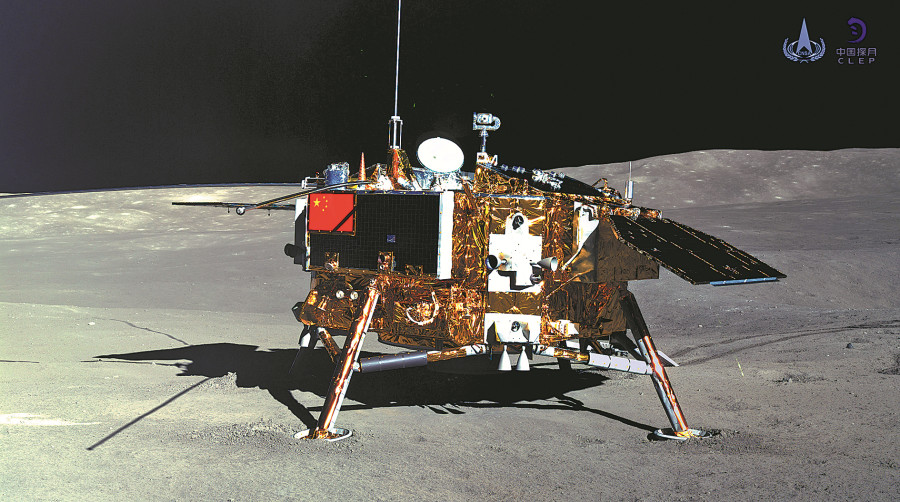China's lunar rover travels nearly 400 meters on moon's far side
Xinhua | Updated: 2020-03-02 15:01

BEIJING -- China's lunar rover Yutu-2, or Jade Rabbit-2, has driven 399.788 meters on the far side of the moon to conduct scientific exploration of the virgin territory.
Both the lander and the rover of the Chang'e-4 probe have ended their work for the 15th lunar day, and switched to dormant mode for the lunar night, according to the Lunar Exploration and Space Program Center of the China National Space Administration.
China's Chang'e-4 probe, launched on Dec. 8, 2018, made the first-ever soft landing on the Von Karman Crater in the South Pole-Aitken Basin on the far side of the moon on Jan 3, 2019.
As a result of the tidal locking effect, the moon's revolution cycle is the same as its rotation cycle, and the same side always faces the earth.
The far side of the moon has unique features, and scientists say Chang'e-4 could bring breakthrough findings.
The scientific tasks of the Chang'e-4 mission include conducting low-frequency radio astronomical observations, surveying the terrain and landforms, detecting the mineral composition and shallow lunar surface structure and measuring neutron radiation and neutral atoms.
Yutu-2 has worked much longer than its three-month design life, becoming the longest-working lunar rover on the moon.
The rover has helped scientists unveil the secrets buried deep under the surface on the far side of the moon, enriching human's understanding about the history of celestial collision and volcanic activities and shedding new light on the geological evolution on the moon.
Scientists used the Lunar Penetrating Radar on Yutu-2 to send radio signals deep into the surface of the moon, reaching a depth of 40 meters. It shows that the subsurface is essentially made by highly porous granular materials embedding boulders of different sizes.
The Chang'e-4 mission embodies China's hope to combine wisdom in space exploration with four payloads developed by the Netherlands, Germany, Sweden and Saudi Arabia.
China will continue its lunar exploration program, with the Chang'e-5 lunar probe, weighing about 8.2 tonnes, expected to be launched in 2020 to bring lunar samples weighing 2 kg back to Earth.
























